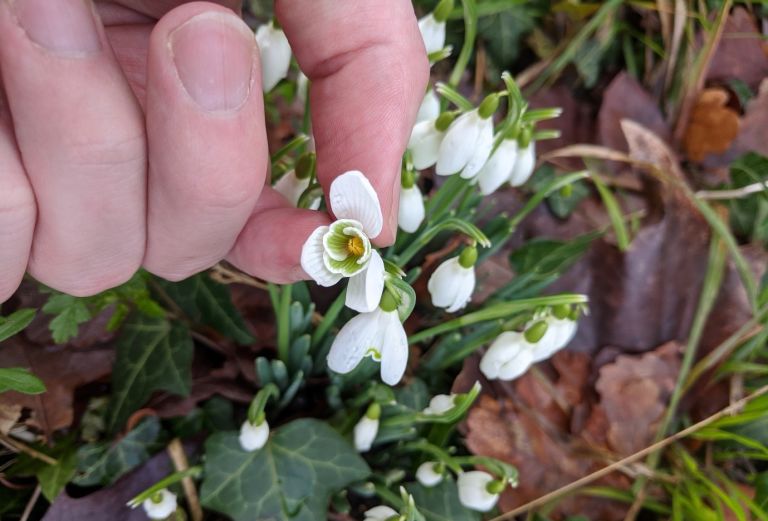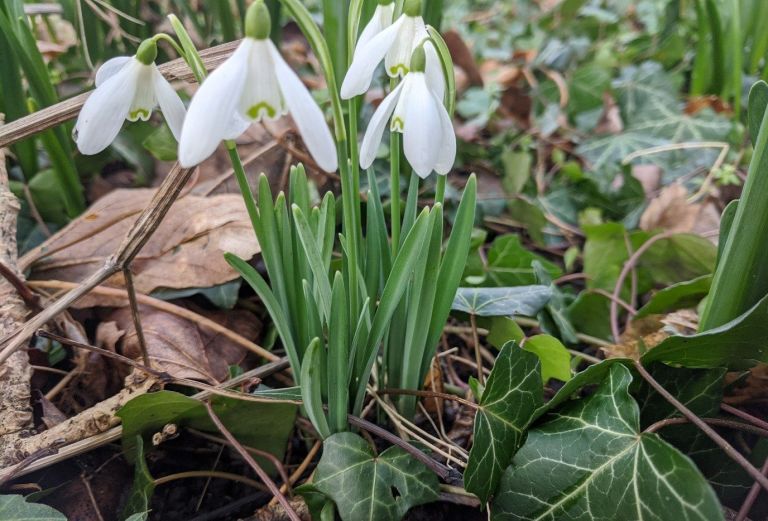
Gilanthus nivalis (common snowdrop)
Galanthus nivalis is often referred to as the common snowdrop – this is because it has one of the biggest natural ranges of the 21 species of snowdrop: appearing in woodlands across Europe from Ukraine to Spain and even in Scandinavia. So why write about the common snowdrop when there are over a thousand intricately patterned showy cultivars to choose from? Not only is there extreme beauty in this dominative, simple white and green flower but really there isn’t anything common about it at all.

Snowdrops are one of the first bulbs to emerge each year and flowers between December and April, though February represents the ideal month to see most cultivars. These clever bulbs can reproduce vegetatively by growing offsets or new bulbs underground, but also by setting seed. The flowers hold their tepals (petals) closed until the temperature is warm enough for pollinators to be actively foraging before they open.
This gives solitary bees a good source of early nectar and is important for queen bumble bees. The genius of the plant only continues when you look at that seed, which has an elastiome: a protein-rich appendage holding a small amount of oil that attracts foraging ants. These ants then take the seed back to their nest, spreading the plant further. Clever!

There is yet another trick up this winter woodland specialists’ sleeve. Since it emerges in winter, often at the midway point between the winter and spring equinox, it has to contend with some of the coldest temperatures of the year. The tips of snowdrop leaves are hardened to grow through frozen soil or snow, and its sap contains a form of antifreeze which prevents damage in even the most severe British winters.
Next time you spot a cluster of snowdrops poking through the brown winter leaves at the Palace, remember that just because a plant is common doesn’t mean it’s not extraordinary: sometimes it’s quite the opposite!